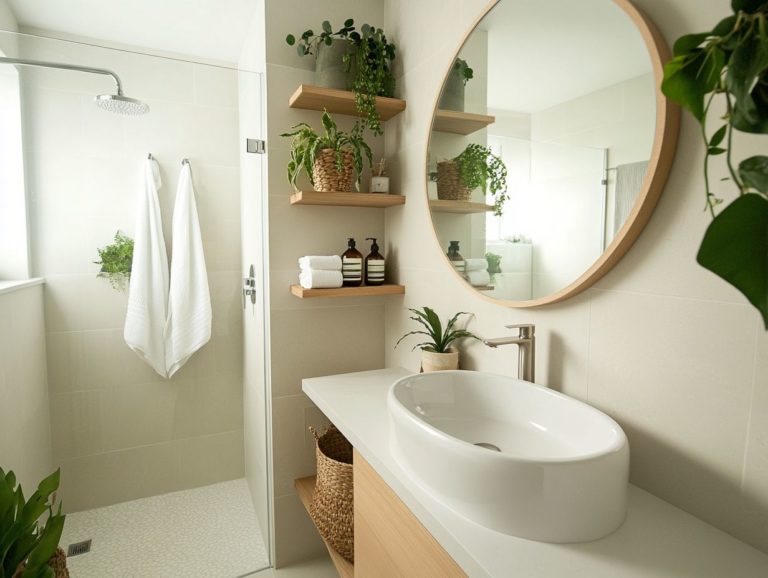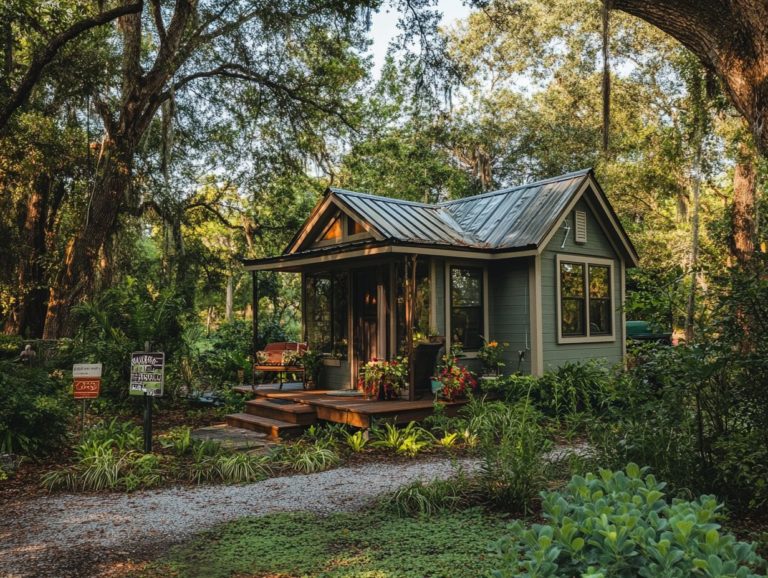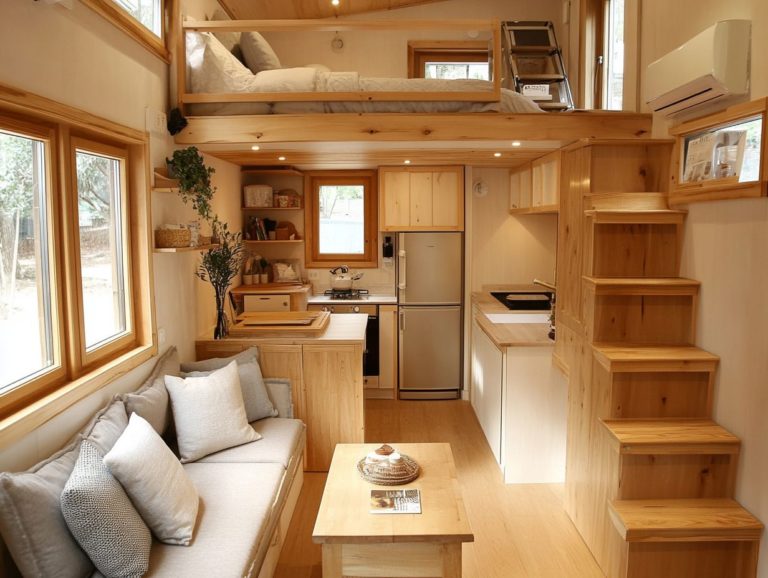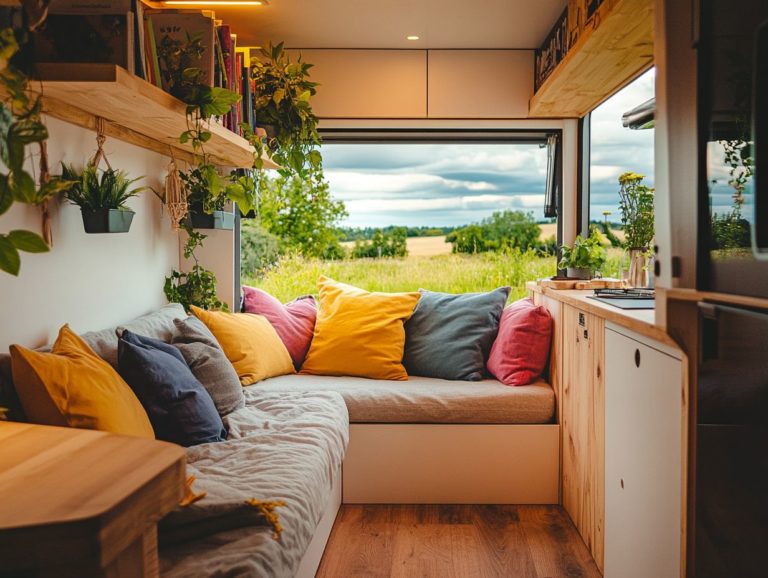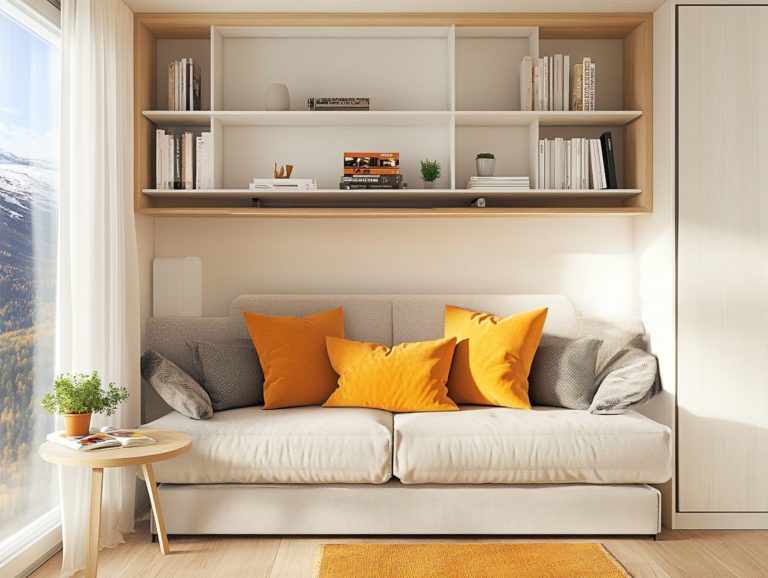How to Design a Tiny House for Family Living
In a world that increasingly values minimalism and sustainability, tiny houses may be the perfect solution for simplifying your life and that of your family.
What exactly is a tiny house, and how can it accommodate your family s needs? This article explores the myriad benefits of tiny house living, from financial savings to a reduced environmental footprint. We also offer practical design tips to maximize both space and comfort.
Discover clever storage solutions and essential child safety considerations. Learn how to create a functional and inviting home for your family all within a cozy, compact footprint.
Contents [hide]
- Key Takeaways:
- Benefits of Living in a Tiny House with a Family
- Designing a Tiny House for Family Living
- Maximizing Storage in a Tiny House
- Designing for Functionality and Comfort
- Building a Tiny House with Children
- Maintaining a Tiny House with a Family
- Frequently Asked Questions
- What are the key considerations when designing a tiny house for family living?
- How can I maximize storage space in a tiny house?
- What are some tips for creating a comfortable sleeping area in a tiny house?
- How can I ensure privacy for each family member?
- What are efficient ways to maximize natural light and ventilation?
- How can I make a tiny house feel more spacious?
Key Takeaways:
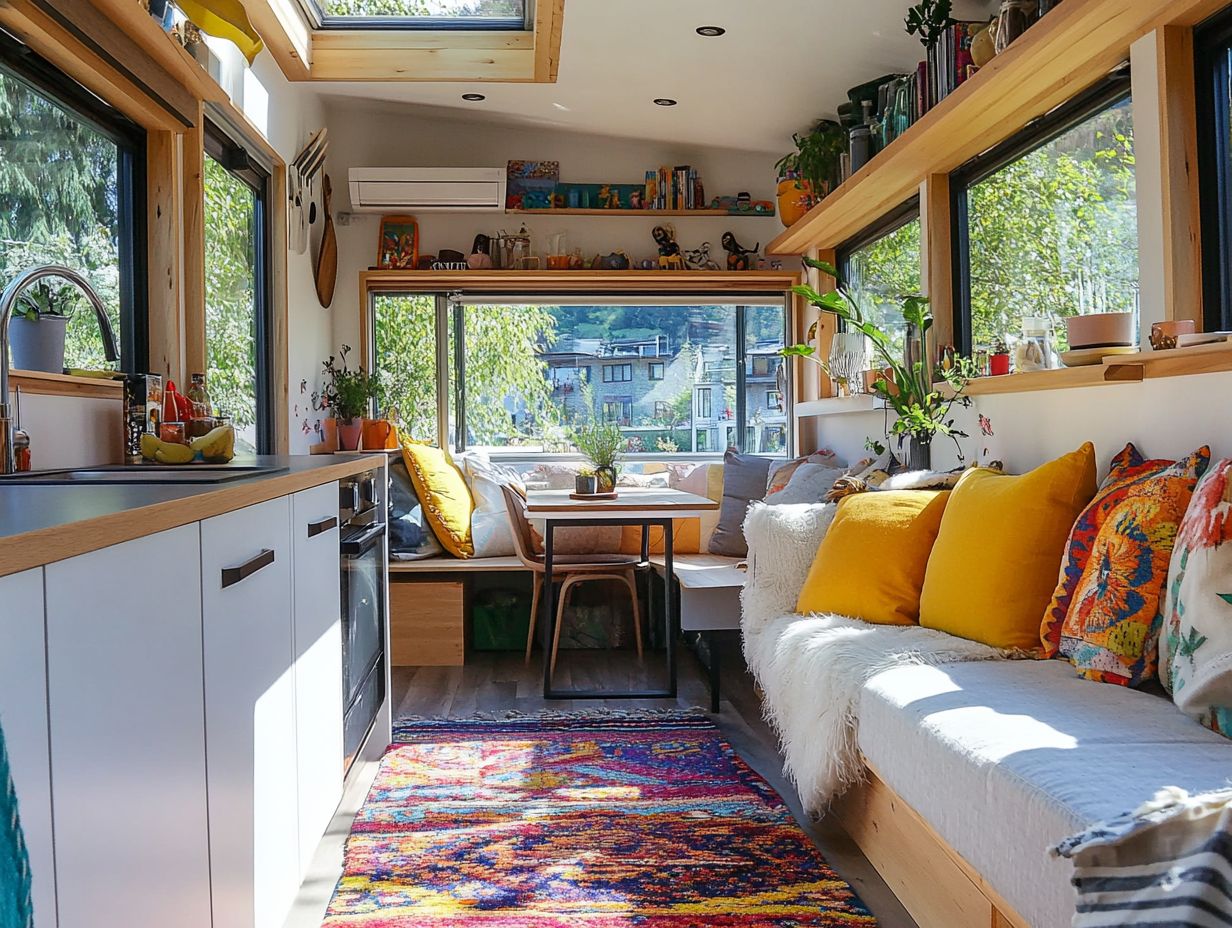
- Consider your family’s needs when designing a tiny house, including childproofing and creating multi-purpose spaces.
- Maximize storage through creative solutions and organization to make the most of limited space.
- Enjoy financial and environmental benefits by living in a tiny house as a family, but be prepared to maintain and clean regularly to keep it functional and comfortable.
What is a Tiny House?
A tiny house signifies a remarkable shift in modern living. It invites you to embrace minimalism, sustainability, and the art of efficient space utilization. With a compact footprint typically under 400 square feet, these homes use eco-friendly materials and designs that prioritize tall ceilings and ample natural light, creating an open floor plan that feels surprisingly spacious.
This innovative approach appeals to those seeking financial freedom and nurtures a sense of community among tiny living enthusiasts.
Today, tiny homes are booming in popularity! They reflect a growing consciousness about environmental sustainability and a yearning for a simpler lifestyle. These compact dwellings come in various styles, from charming rustic cabins to sleek modern masterpieces. For those considering off-grid living, exploring tiny house design ideas can inspire unique elements like furniture that serves more than one purpose and energy-efficient appliances.
As more people join the tiny house movement, they often engage in workshops that explore DIY construction and cutting-edge design trends, enhancing their personalized living experiences. This trend champions responsible consumption and a reduced ecological footprint, resonating with those who prioritize eco-friendliness in their choices.
Benefits of Living in a Tiny House with a Family
Living in a tiny house with your family offers a unique array of advantages that can significantly elevate both your quality of life and family dynamics. These benefits include achieving financial freedom through reduced housing costs and fostering a vibrant community spirit. Tiny home residents frequently participate in communal activities and events.
You can customize your compact living space for homeschooling, creating an innovative educational environment that thrives in a space-efficient manner.
Financial and Environmental Advantages
The financial and environmental benefits of tiny house living are compelling, presenting a remarkable option for families eager to downsize and simplify their lives.
By adopting this minimalist lifestyle, you may significantly reduce your overall debt load. Imagine slashing average mortgage payments by up to 80%. This shift can make budgeting not just easier but liberating, especially when compared with 3-bedroom tiny house living options. Your utility expenses could also drop by nearly 50%, translating into substantial savings over time. Plus, these cost-effective living arrangements open unique financial opportunities, allowing you to invest in experiences rather than mere possessions.
Environmentally, many tiny homes are designed with renewable resources, such as solar panels and sustainable materials, which further minimize your carbon footprint. This harmonious blend of economic savings and environmentally conscious choices makes tiny living not merely a trend but a transformational lifestyle choice for countless families.
Join the tiny house movement today and transform your life!
Designing a Tiny House for Family Living
Designing a tiny house for family living requires careful planning. You need to maximize space while ensuring comfort and functionality.
A well-thought-out layout can turn a compact area into a multifunctional home. It can accommodate everything from a home office to a playroom or a cozy reading nook.
Using innovative cabinetry and simple design methods that reduce clutter will help create a visually appealing environment. Explore smart design solutions for tiny house living to ensure this space can cater to your family’s diverse needs.
Factors to Consider
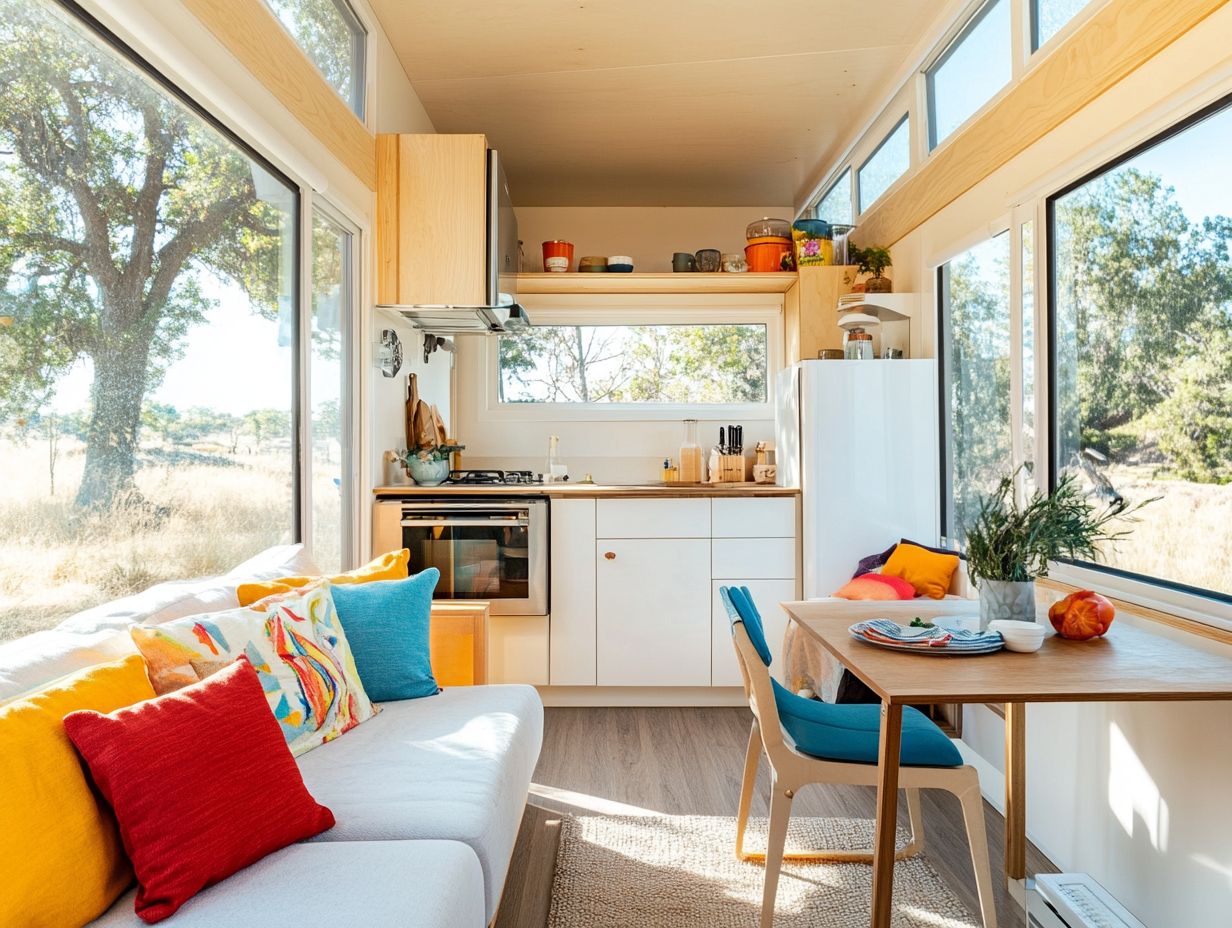
When designing a tiny house, consider several critical factors. Thoughtful plans with room dividers can provide privacy and organization.
Insulation efficiency is also key to keeping your home comfortable in all climates. These elements are essential for a sustainable and harmonious living environment.
Your choice of materials greatly affects the look and durability of your home. Choosing lightweight, sustainable materials improves mobility and reduces your environmental impact.
Understanding your family’s needs like a multipurpose area or ample storage guides your design choices. Incorporating good lighting can make your space feel larger, while smart storage solutions like under-bed compartments maximize every inch.
Ultimately, your tiny house should reflect your family’s lifestyle. It s about blending creativity and practicality.
Space-Saving Strategies
Effective space-saving strategies are crucial in tiny home design. They help you live comfortably without clutter.
Smart storage solutions like cabinets and fold-down surfaces maximize every square inch. This transforms your home into a versatile haven that adapts to your needs.
Consider using multipurpose furniture, like sofa beds and ottomans with hidden compartments. This keeps your footprint minimal.
Vertical storage options, such as wall-mounted shelves and pegboards, utilize wall space effectively. Integrating built-in furniture that fits your home s design adds style and practicality.
Under-bed storage is a smart trend that hides items while keeping them accessible. With planning and creativity, you can create an organized and inviting living environment that feels spacious.
Maximizing Storage in a Tiny House
Maximizing storage in a tiny house is vital for family living. It turns your space into a more organized and functional haven.
Use high ceilings for vertical storage, innovative cabinets, and fold-down tables to optimize your storage solutions.
These strategies elevate your organization and create a harmonious flow throughout your home.
Creative Solutions for Limited Space
Creative solutions for limited space are essential for tiny house living. They elevate both functionality and aesthetics.
By incorporating fold-down surfaces and smart storage solutions, you can craft adaptable spaces that serve multiple purposes. Imagine transforming your dining area into a productive workspace.
Room dividers can also separate areas, providing the privacy and organization you seek, all while being efficient.
Innovative furniture choices, like sofas that can be rearranged or extendable dining tables, offer you the flexibility needed for social gatherings and daily life.
This creates a versatile home with multiple uses. Vertical storage, such as wall-mounted shelves and hooks, minimizes clutter and maximizes utility, making it easier for you to keep your spaces organized.
Utilizing light colors and mirrors can create an illusion of depth, making even the coziest corners feel more open and inviting.
By embracing these design principles, you can transform your limited living environment into a multifunctional haven that truly reflects your lifestyle and taste.
Designing for Functionality and Comfort
Designing a tiny house with a focus on functionality and comfort is crucial for cultivating a welcoming and efficient living space.
Incorporate a smart layout, high ceilings, and abundant natural light to transform a compact environment into one that feels expansive and inviting.
Ensure that each area serves a distinct purpose while prioritizing comfort. Incorporating sustainable design practices for tiny houses allows you to achieve a harmonious balance in your tiny living experience.
Creating Multi-Purpose Spaces
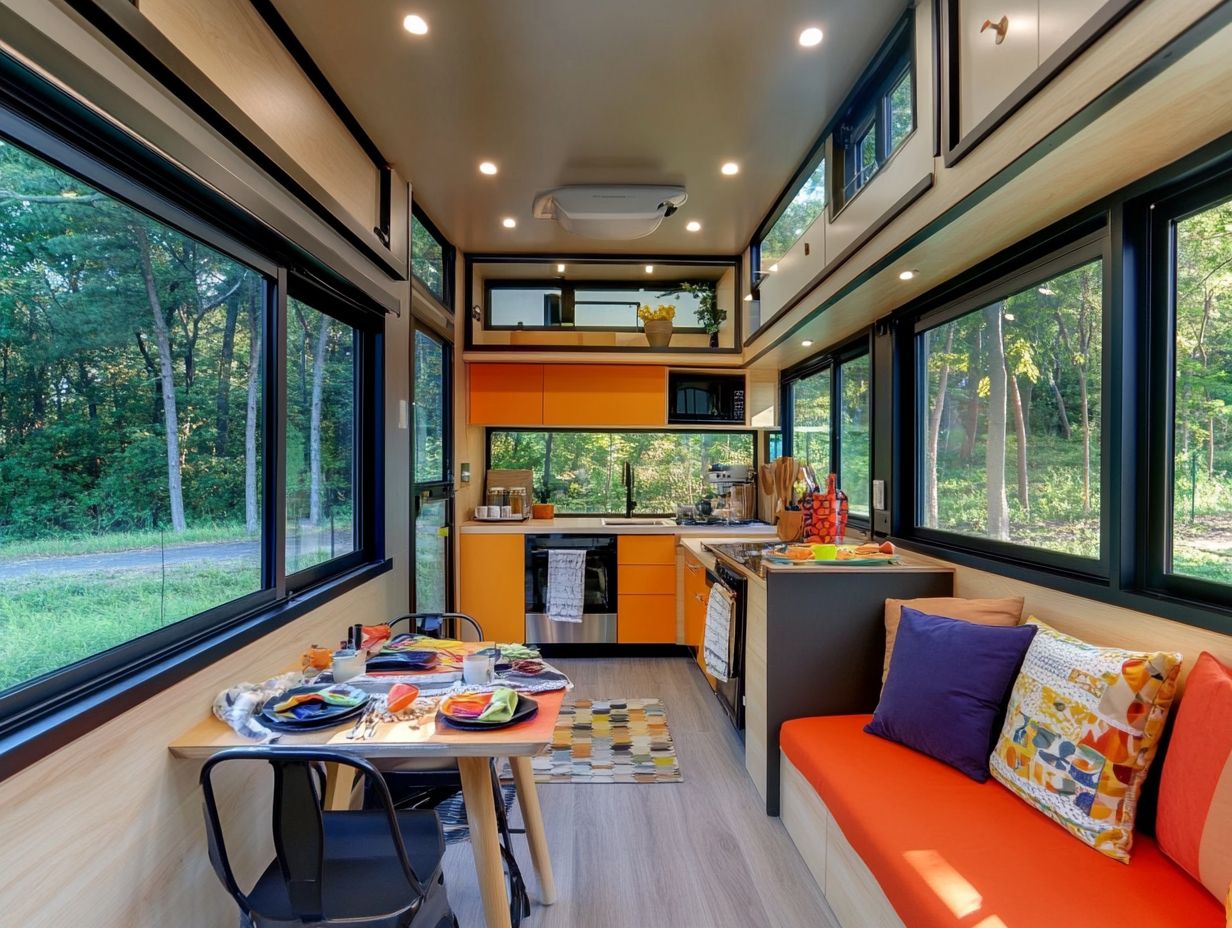
Creating multi-purpose spaces in a tiny house is a brilliant design approach that addresses the varied needs of family living.
By incorporating fold-down tables and flexible furniture, you can effortlessly transform areas into a playroom, home office, or family gathering spot, ensuring every square inch is put to good use.
This adaptability is vital for maximizing limited space.
Don t miss out on investing in modular sofas that can be reconfigured based on your family s activities. Chic ottomans that double as storage solutions are also great options.
Thoughtful design elements, such as sliding partitions or multifunctional shelves, facilitate smooth transitions between different functions, keeping your living spaces dynamic and inviting.
Utilizing wall-mounted desks or collapsible Murphy beds can further convert bedrooms into practical daytime areas.
By prioritizing these adaptable features, you can effortlessly achieve a perfect harmony of comfort and efficiency.
Building a Tiny House with Children
Building a tiny house with children in mind demands thoughtful planning to guarantee both safety and functionality.
Childproofing becomes essential, as it’s vital for families to identify potential hazards and implement effective safety measures throughout the home.
Craft spaces that cater to homeschooling to create a nurturing and educational atmosphere. This enriches your family s overall living experience.
Childproofing and Safety Measures
Childproofing and implementing safety measures are crucial elements in designing a tiny house for families with children.
Ensure that the layout addresses potential hazards like sharp edges, stairs, and falls to create a secure environment.
Incorporate childproof locks and secure storage solutions to enhance safety while maintaining an efficient living space.
To optimize safety, consider rounded furniture to minimize injury risks and installing gates at stairways to prevent accidental tumbles.
Don t overlook the importance of window screens; they keep children secure while allowing fresh air to flow in.
Choosing non-toxic materials for finishes and furnishings is essential for ensuring a healthy living environment.
Creating designated play areas with soft flooring is a fantastic way to provide a safe space for your children to explore.
This promotes independence while keeping them within your sight.
Additionally, equipping electrical outlets with covers will help prevent any accidental shocks, ensuring that every aspect of your tiny house prioritizes the well-being of its youngest residents. For those interested in maximizing their space, check out this guide on how to design a tiny house for year-round living.
Maintaining a Tiny House with a Family
Maintaining a tiny house with your family requires a mix of organization and cleaning strategies to keep the space functional and clutter-free. Regular decluttering and a steady commitment to organization empower families to navigate their limited space with ease.
Establishing cleaning routines that prioritize high-traffic areas and maintain a functional layout elevates the living experience in your tiny home.
Organization and Cleaning Tips
Effective organization and cleaning tips are key to maintaining a tiny house, especially when balancing the diverse needs of your family. Use smart storage solutions and set up a consistent cleaning routine to keep your living space tidy and functional.
Creating designated zones for different activities simplifies organization and enhances your overall living experience.
Incorporate furniture that serves more than one purpose, like ottomans that double as blanket storage or tables that transform into workspaces. Embrace a “clean as you go” policy while cooking and managing daily tasks to significantly reduce clutter.
Make it a habit to regularly clear out items you don t use. It keeps your space fresh and inviting!
Don’t overlook the power of wall-mounted shelves and hooks; they free up valuable floor space, maximizing every inch for essential activities. By integrating these strategies, you craft an adaptable environment that meets your family’s varying needs without overwhelming your cozy living area.
Check out this video for more tips on maintaining a tiny home!
Frequently Asked Questions
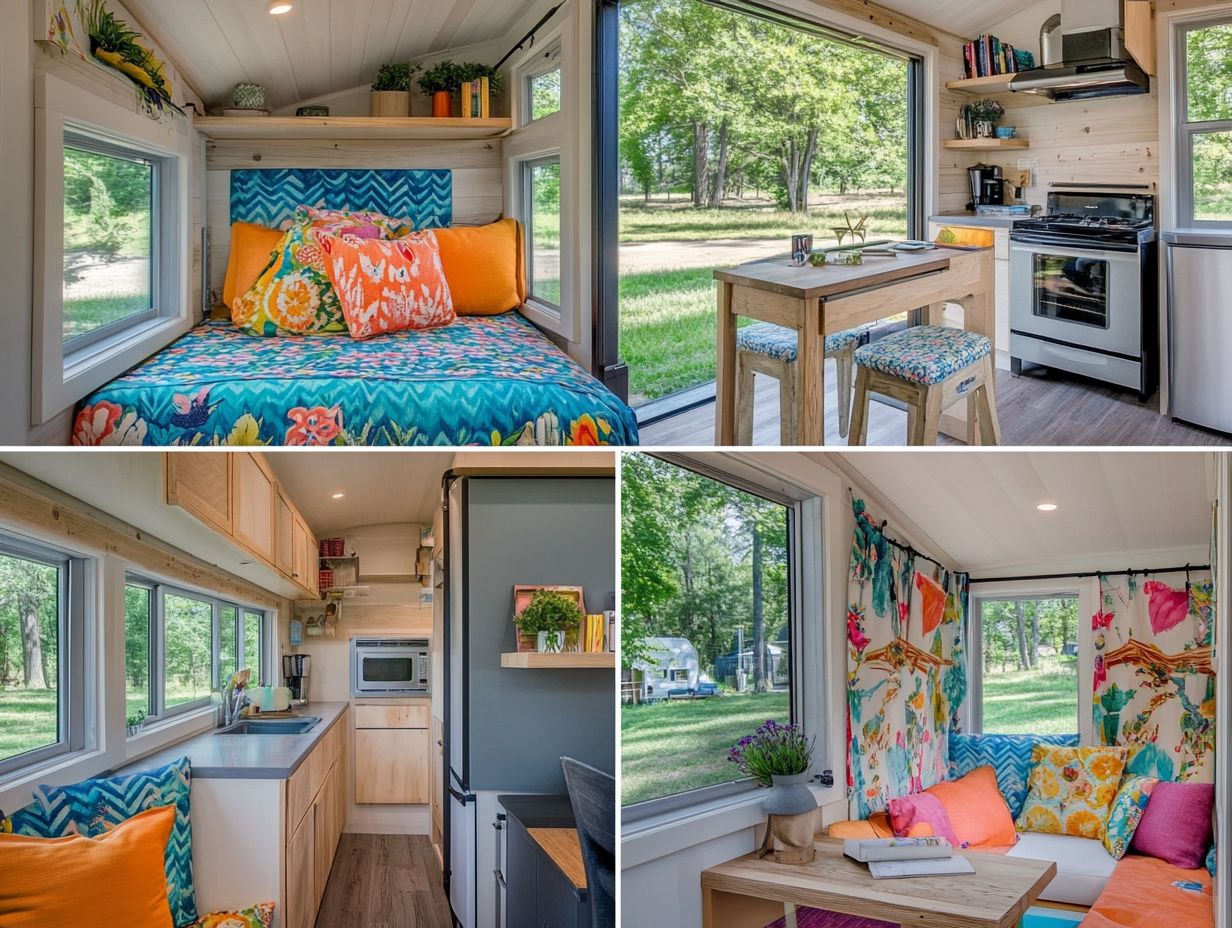
What are the key considerations when designing a tiny house for family living?
When designing a tiny house, prioritize functionality and space optimization. Consider the specific needs and preferences of each family member.
How can I maximize storage space in a tiny house?
Using furniture that serves more than one purpose, like storage beds and tables, is a smart way to maximize storage space. Vertical storage solutions, like wall shelves and hanging organizers, are also very helpful.
What are some tips for creating a comfortable sleeping area in a tiny house?
Invest in high-quality, space-saving furniture, such as bunk beds or loft beds, to create a comfortable and functional sleeping area for multiple family members. Light and airy color schemes make the space feel more open and inviting.
How can I ensure privacy for each family member?
Use dividers or curtains to create private spaces. Clever furniture placement can also help establish separate areas for different family members.
What are efficient ways to maximize natural light and ventilation?
Place windows and skylights strategically to enhance natural light and ventilation. Light-colored walls and mirrors reflect and amplify the light, making the space feel brighter.
How can I make a tiny house feel more spacious?
Incorporating minimalism and decluttering helps create a sense of spaciousness. Use a neutral color palette and prioritize functionality over decorative items. Multi-functional furniture is a great way to save space and avoid clutter.


